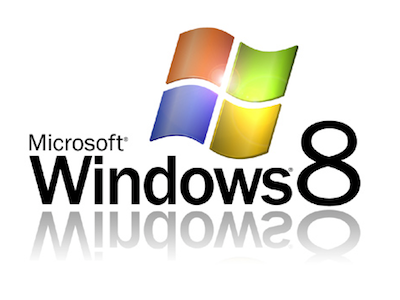Microsoft Details Making USB 3.0 Great in Windows 8
While there are other emerging interconnect standards that promise speedy transfers, such as Thunderbolt, USB 3.0 still has the momentum from its previous iterations.
Windows 8 will support the latest round of hardware technologies, and its developers have shared with us on the official blog the work being done to integrate "SuperSpeed" USB 3.0 into the operating system.
The Windows team's work on USB 3.0 support started before there were even any devices available. Microsoft worked with virtual devices until there was real hardware on which to test.
"To create a brand new USB software stack, we had to start work early. If we waited for hardware to be available we would be too late to support the budding USB 3.0 ecosystem. We decided to start before there were any USB 3.0 devices by building 'virtual' devices," read the Windows Team Blog. "Virtual devices are software representations of real, physical USB hardware: the ports, the hubs, and other devices.
"While we were focused on building support for USB 3.0 chips inside the PC, we couldn’t ignore the world of devices. We had to think outside the box – literally. There are over 10 billion USB devices worldwide. Some are in use daily and some are tucked away collecting dust, but all were originally designed to work with Windows PCs. Compatibility is the Windows promise. Our customers have grown accustomed to expecting new versions of Windows to work with their existing devices and drivers. This commitment to compatibility remains a high priority for Windows 8 across the whole product."
While Apple's operating systems have the luxury of being in a relatively limited and closed ecosystem, Microsoft has a huge challenge in making sure its software is compatible with the widest range of hardware.
The blog further provides a peek into the sort of effort devoted to compatibility: " After 10 years of USB experience, a dozen telemetry sources, and tons of research and brainstorming, we were able to reduce the USB compatibility effort to roughly 1000 unique devices that we regularly test in the Windows labs. We ensure the devices get recognized correctly when connected to PCs, that they sleep and resume appropriately to conserve power, and that they are able to withstand various stress conditions. Our telemetry data indicates that over 90% of devices rely on the 16 class drivers in Windows, but for the more customized devices, we verify that their drivers get seamlessly downloaded from Windows Update whenever possible (the device maker needs to cooperate to support this scenario). With USB 3.0 providing full backwards compatibility, older drivers will still work without any changes."
Get Tom's Hardware's best news and in-depth reviews, straight to your inbox.
After all that work, we get the screaming performance that you can see in the video below
-
burnley14 Way to jump on board, Microsoft. Honestly file transfer speeds are the single greatest bottleneck in today's systems. Processing power is sufficient in almost every instance, integrated graphics (either fusion or Intel HD) is enough for 99% of tasks, and even boot-up and responsiveness can be drastically improved with SSDs if HDDs aren't cutting it. But file transferring is still behind the pack.Reply
Even with USB 3.0, transferring files is one of the few things that I actually have to sit and wait for more than a few seconds for my computer to complete. The industry really needs to push this forward, USB 4.0 needs to happen within just a few years. -
chickenhoagie sithtisi dont really get it... i have USB3 on my Windows 7... what is the big deal with thisi think the point here is that Microsoft implemented a better software protocol stack for USB3.0 to speed up the transfer rates of 3.0 devices. In other words, USB3.0 is going to perform better in Windows 8 than it will in Windows 7.Reply -
alidan usb has at least in these videos, become something that out classes hdds speed.Reply
what i mean is a normal hdd if im not wrong, will not saturate a 3.0 line
ssds yes, hdd no
so for now, at least for me, usb has become fast enough. when an ssd becomes a viable storage device, as in 1tb portable, than usb will need a another boost. key word there is NEED. you can want if faster but you dont need it. -
pbrigido I was not really looking forward to Win8, but after a couple of months of information slowing leaking out about it, I am warming up to it. I can't help but think in the back of my mind that Win8 coupled with IvyBridge on a tablet might be the thing that finally gets me into the tablet market. Everything else doesn't do it for me.Reply -
SteelCity1981 chickenhoagiei think the point here is that Microsoft implemented a better software protocol stack for USB3.0 to speed up the transfer rates of 3.0 devices. In other words, USB3.0 is going to perform better in Windows 8 than it will in Windows 7.Reply
And they couldn't do this with Windows 7? Windows 7 Sp1 was suppose to have software protocol to natively support USB 3.0 if you recall and the Microsoft but decided to ditch support for it in Sp1. -
CaedenV alidanusb has at least in these videos, become something that out classes hdds speed.what i mean is a normal hdd if im not wrong, will not saturate a 3.0 linessds yes, hdd noso for now, at least for me, usb has become fast enough. when an ssd becomes a viable storage device, as in 1tb portable, than usb will need a another boost. key word there is NEED. you can want if faster but you dont need it.Indeed, most HDDs will burst at 150-200MB/s and sustain at 80-130MB/s, USB3 transfers at a 'theoretical' 625MB/s, which will out-class even some of the fastest SSD drives on the market. The big problem I see is that most devices used on USB are printers and flash drives, both of which are painfully slow and dont even max out USB2, so I see most of this bandwidth going to waste, with the exception of power users.Reply

